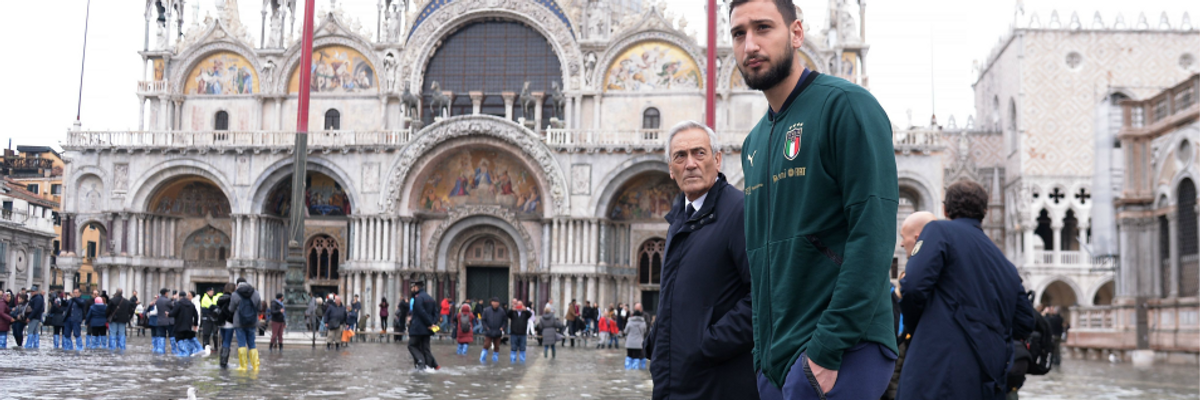If humans have been lucky, basking in the comforting warmth of an inter-glacial period for the last 10,000 years, that luck may be about to turn. Rest assured we are not entering a glacial period. No, our quest for greater comfort has us pumping fossil fuel residues in the air--particularly CO2--warming the earth beyond its natural trajectory. One consequence is melting Arctic (especially Greenland) ice and coastal flooding.
Problematic as that might be, new research holds worse in store... much worse, for the Antarctic has not been a passive bystander. It melted when the north was taking a rest allowing no let up.
The previous glacial age lasted from 125,000 to 118,000 years ago. A paper published November 6, 2019 in Nature Communications (Vol. 10, Article # 5040) has found the Greenland ice sheet melt insufficient to explain the highs of the rise then. In fact, it was the Antarctic ice sheet, previously thought to be inconsequential, that was key. It turns out the Southern Ocean warmed first at the start of the inter-glacial, leading to a change in the circulation pattern of the oceans and to a warming of the northern polar areas to start the ice melt in Greenland.
Temperatures then were up to 1degC higher than now but the same has been estimated for us in the future. However, this time climate changes on earth have been accelerated by greenhouse gas emissions over the industrial period, resulting in more extreme climate changes than in the last inter-glacial.
The research has also revealed that ice melt caused a 10 meter sea level rise above the present level at a rate of 3 meters (about 10 feet) per century, a rate that is 10 times higher than the rise observed in the last 150 years. If 10 ft. per century has a remote feel, try a foot every 10 years!
This is far greater than current projections of sea level rise that anticipate an increase at the most to about 3 feet above 2000 levels by 2100. The predictions, however, do not account for an important natural outcome of ice sheet melt, that of ice cliff instability. The ice cliffs form as the warm water melts their ice under the water, eating away until the cliff shears off and collapses into the sea.
The collapse is a sudden and unpredictable addition to the gradual melt in the ocean. It also means that polar ice sheet melt can affect sea levels far more intensely than has been projected so far, and it could account at least in part for the much higher rise found by the researchers in the prior inter-glacial. Are we in for a surprise!
If incoming solar radiation was greater in the last inter-glacial because of the earth's position relative to the sun, the CO2 levels were lower, at 280 parts per million as opposed to 410 plus today. Worse, in the former inter-glacial the two polar areas did not warm up simultaneously. Today's intensive climate change is propelled by greenhouse gases, and the warming is bipolar with the ice melting in both polar regions at the same time.
Another paper also published in Nature Communications a week earlier (Vol. 10, Article # 4844 October 29, 2019) examines global vulnerability to coastal flooding from rising sea levels given new metrics for measuring land elevation. The model currently in use for this measurement, developed by NASA, has a 2 meter vertical bias. Using a new Coastal DEM (Digital Elevation Model) and a mean estimate of sea level rise this century, the authors estimate 190 million people live below projected high tide lines at present. This rises to 630 million by century's end in the extreme case of high emissions. Increase the sea level rise to 3 meters (10 feet) projected in the other paper above and a billion people could be in jeopardy.
What can one expect? Well, the first signs of trouble will be when coastal flooding that used to happen once a decade becomes an annual event, or when unprecedented events occur. Venice is a current example. In a rare historic flood its iconic St. Mark's Square is hip-deep in water. The church itself and its priceless frescoes could be in danger if the water rises further.
The increased coastal flooding will be gradual of course. Our children, their children, and so on down the line will be the real innocent victims of our legacy/profligacy.

